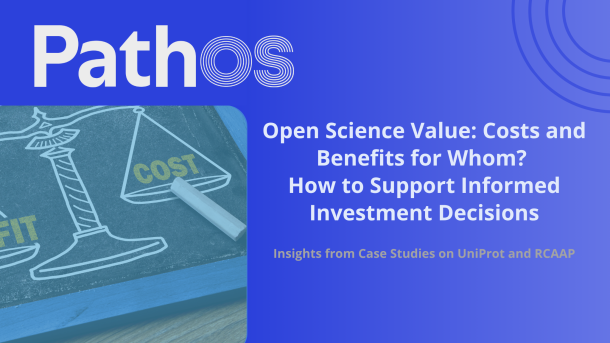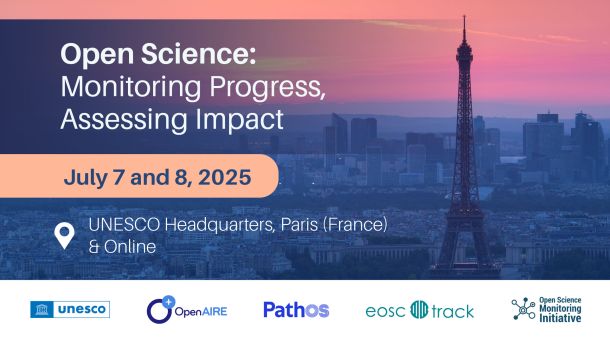Unveiling Open Science Impacts with Cost-Benefit Analysis

Written by Jessica Catalano, CSIL
Understanding the impacts of Open Science (OS) and the extent to which they materialise requires a solid methodological framework, which is not yet fully established. Within PathOS we are currently working on developing a model that can identify these impacts and the different paths through which they occur in academia, economy and society.
As part of this model, project partner, CSIL is developing a Cost Benefit Analysis (CBA) framework tailored for Open Science. This framework is designed to methodically and thoroughly quantify the impacts of Open Science. It does so by considering not only the benefits but also the costs, and crucially, it involves a comparison with a hypothetical scenario where Open Science is not implemented. While the overall model will describe the entire causal pathways associated to OS practices, the CBA framework will specifically focus on those impacts directly attributable to the OS under assessment and will allow the quantification – in monetary terms - of the net effect of a changed scenario.
Case studies Scoping Exercise
The PathOS CBA framework for OS aspires to become a benchmark tool for assessing the costs and benefits of different OS practices. In November 2022, a wider discussion with PathOS case study leaders was initiated to select specific Open Science practices for testing the CBA framework. Different criteria were considered for the selection, including the clear identification of the Open Science practice and its scope, the willingness of responsible institutions to be involved in data collection and interviews, and the availability of data needed for the analysis of costs and benefits from a CBA perspective. As a result, OpenEdition, CNRS’s electronic publishing infrastructure for scientific communication in the humanities and social sciences, and UniProt, an ELIXIR resource that serves as a central hub for collecting information on proteins, were selected for testing the framework. The selection of additional practices are being considered for this testing phase, including the Repository infrastructure for Open Access (RCAAP) managed by the University of Minho.
What's next?
To tackle the intricate task of performing a Cost Benefit Analysis (CBA) for selected Open Science (OS) practices, we anticipate a set of intriguing challenges. These include charting a course through an OS-absent scenario (the counterfactual), delving into the collection of data on both the costs and benefits linked to OS. In a bid to navigate these complexities, we plan to engage in regular discussions with leaders of each case study, focusing on the accessibility of data while addressing issues sensitive information, such as cost details. Our approach extends to in-depth interviews with key stakeholders and comprehensive surveys designed to unravel the tangible benefits of OS, like reductions in access costs and time savings. We are setting our sights on wrapping up this extensive data gathering by mid-2024, paving the way for a thorough validation phase involving a series of critical focus groups with stakeholders. This phase is key to cementing the reliability and accuracy of our findings.
The culmination of this exciting journey will see us presenting the final results at the start of 2025.
Written by
Latest Articles

Open Science Value: Costs and Benefits for Whom? How to Support Informed Investment Decisions

Press Release: Conference on Open Science: Monitoring Progress, Assessing Impact
